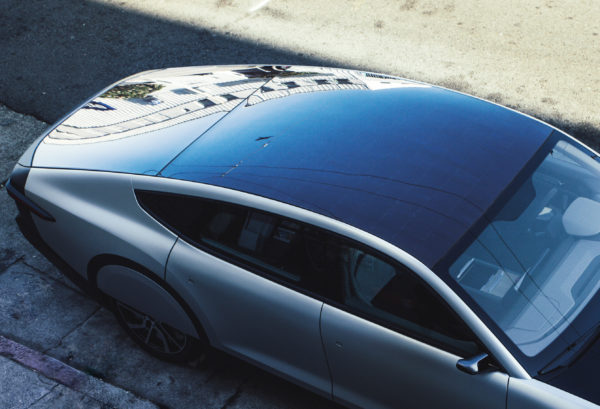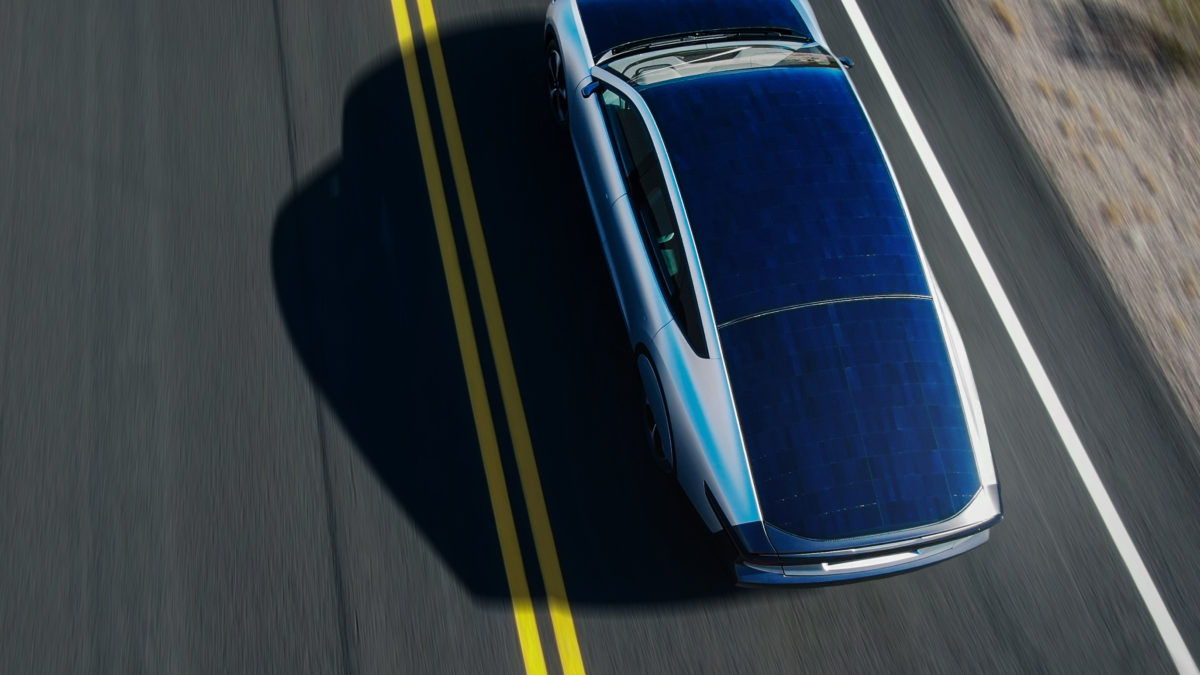Dutch companies Lightyear and DSM NV are working to start commercial production of the former’s electric vehicle solar roof.

Image: Lightyear
The 5m² roof consists of a double-curved, glass-covered solar panel backed with maximum power point trackers. “The roofs are specifically developed for … application on vehicles, focusing on three points … design: High solar cell coverage ratio, durability and safety that fits the requirements for road-going vehicles – and seamless integration to fit the vehicle,” Lightyear chief strategy officer Martijn Lammers told pv magazine.
The roofs, which will be manufactured in Helmond, in the Netherlands, feature interdigitated back contact (IBC) solar cells supplied by U.S. company SunPower and conductive backsheets from DSM NV, a Dutch health, nutrition and materials multinational.
“Our backsheets are well suited for the integrated and double-curved solar modules that fit in the aerodynamic design of the car,” said Nathan Arbitman, strategy director at the DSM Advanced Solar division of the business. “With the application of lossless and aesthetic, back-contact technology to high-tech solar roofs for automotive, we demonstrate the viability of this technology for high-end solar systems, like DSM did already for high power modules for the residential market.”
The electrical contacts are placed at the back of the solar cells, which helps to reduce cell-to-module losses, delivering 3% increased power output, according to the manufacturer. “Furthermore, the backsheet enables the solar roof to be made in an aesthetic curved shape,” Arbitman added.
Commercial
The partner companies plan to expand from the manufacture of prototype products into full commercial output. Lightyear’s Lammers said: “We do not disclose production capacity or other financial data but we are thinking big. The aim is to deliver a solution for customers from the automotive and public transport sector whereby the integration of a solar roof could represent a smart investment.”
The partner companies are focusing on the the European and U.S. markets, with Arbitman adding: “We are making prototype modules for selected applications to determine the feasibility and value proposition and get market feedback.”
EV start-up Lightyear stated a year ago that it expected its sporty-looking Lightyear One model to enter mass production next year.
This content is protected by copyright and may not be reused. If you want to cooperate with us and would like to reuse some of our content, please contact: editors@pv-magazine.com.




3 comments
By submitting this form you agree to pv magazine using your data for the purposes of publishing your comment.
Your personal data will only be disclosed or otherwise transmitted to third parties for the purposes of spam filtering or if this is necessary for technical maintenance of the website. Any other transfer to third parties will not take place unless this is justified on the basis of applicable data protection regulations or if pv magazine is legally obliged to do so.
You may revoke this consent at any time with effect for the future, in which case your personal data will be deleted immediately. Otherwise, your data will be deleted if pv magazine has processed your request or the purpose of data storage is fulfilled.
Further information on data privacy can be found in our Data Protection Policy.